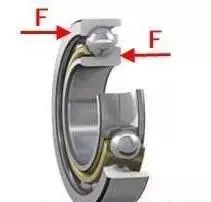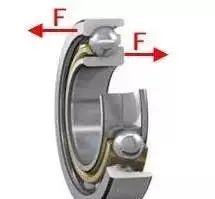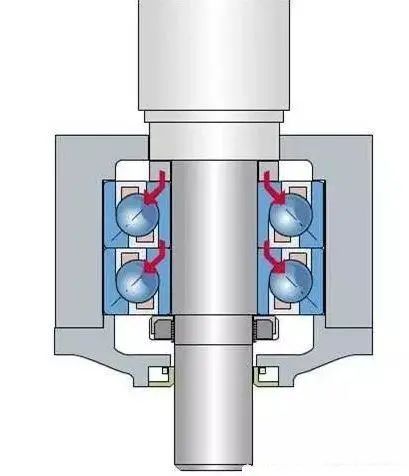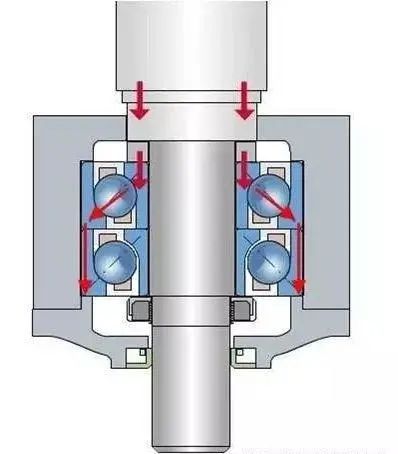 Phone : +86 - 18662869458
Phone : +86 - 18662869458
 E-mail : linda@no2bearing.com
E-mail : linda@no2bearing.com
1. Force on single row angular contact ball bearings
Single row angular contact ball bearings can bear both radial and axial loads. The carrying capacity of the axial load depends on the size of the contact Angle.
But single row angular contact ball bearings can only bear one-way axial load

If the force is applied in the opposite direction, the bearings will fall apart.

2. The relationship between preload and life of single row angular contact ball bearings
Single-row angular contact ball bearings achieve optimal service life under light preload conditions.
If the preload is too large, it will cause bearing overload, increased friction, and the bearing may be locked, thus reducing the service life of the bearing.
If the clearance is too large, it will produce noise and vibration, at this time the accuracy of the equipment can not be guaranteed, and the number of rollers bearing internal force will be reduced, so that the bearing has the risk of premature failure.
3. Pairing use of angular contact ball bearings
When the axial load is too large, we often use two bearings in series to increase the load. This is our ideal state.

In fact, because the bearing height direction tolerance is large,
If the tolerance of the inner ring of the lower bearing goes up to the limit, the force situation shown in the figure above will occur.

Therefore, when two bearings are needed to be used together, the use of paired bearings is strongly recommended!
4. Solutions for paired bearings
A. High-end imported bearings adopt general assembly bearings
For example, the tolerance of 7310BEGAP bearing in height is only ±0.004㎜.
So as to achieve universal pairing, the advantage is convenient installation. But the disadvantage is also very obvious, because of the processing requirements are particularly high, so the price is higher, suitable for high-end occasions.
B, the more economical solution: the use of paired bearings
The corresponding suffixes are DB, DF and DT. This is a relatively economical solution.



